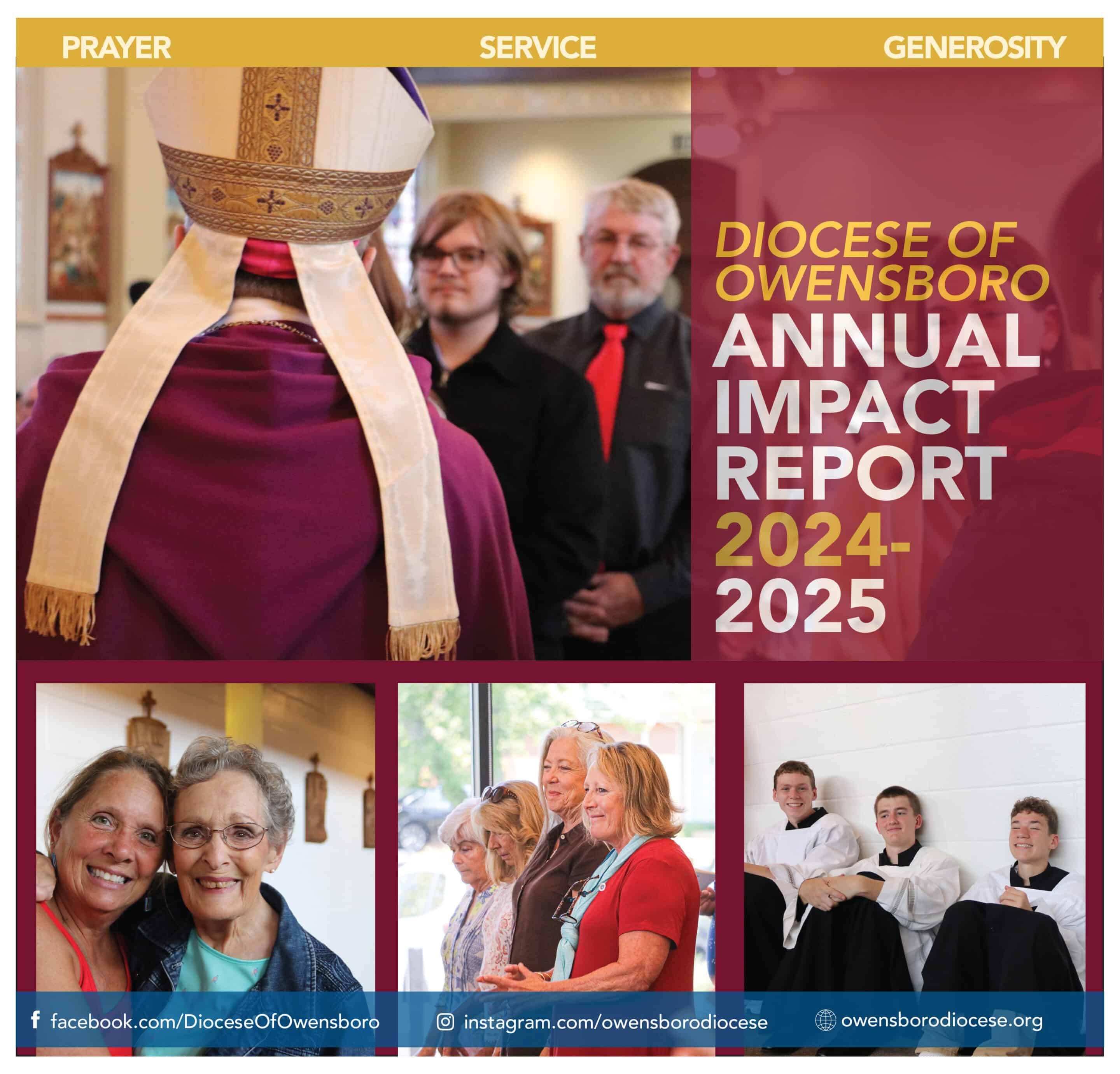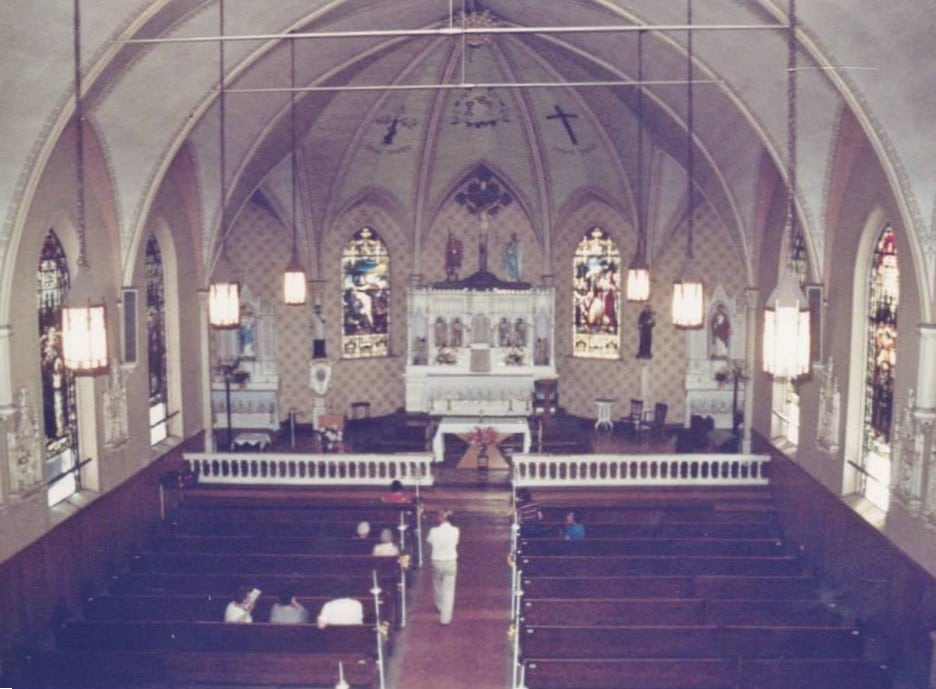
St. Joseph Church in Owensboro, a few years before the church was closed. COURTESY OF GRADY EBELHAR
Kirche Heilige Joseph: The tale of the German church in Owensboro, Kentucky
BY GRADY EBELHAR, SPECIAL TO THE WESTERN KENTUCKY CATHOLIC
In the 1850s, more than 150,000 Germans had come to the United States, and many were trickling into southern Indiana. Early in the 1880s and throughout that decade many German Catholic farmers came from the parishes in southern Indiana and settled in the vicinity of Owensboro.
St. Joseph Parish School was one of the oldest institutions of learning in the city of Owensboro. It began in 1868 and was two years older than the parish. Ten German-Catholic families who were members of the St. Stephen’s Church separated themselves into another congregation, organizing as St. Joseph’s Church with Fr. Paul Joseph Volk. Fr. Volk, who was then the pastor of St. Alphonsus, assembled the German-speaking Catholics in Owensboro in the summer of 1870 in an old brick building that stood at the corner of West Third Street and Cedar for church gatherings.
In the spring of 1871, Fr. Ivo Schacht, pastor of St. Stephen’s, built the first St. Joseph Church at Ninth and Sweeney Streets.
The German Catholics were allowed to worship at old St. Stephen Church but were only allowed to sit in the back of the church away from the rest of the congregation. Prejudice against the Germans continued for years.
In May 1878, a fire burned the church down, destroying the first church. Problems for the parish began. Bishop William McClosky of the Diocese of Louisville wanted to move the church to Seventh and Frederica and the rural Germans wanted it back in its original site.
By fall, a foundation had been laid at Fourth and Clay Streets and the church was underway. One report says the location angered Bishop McClosky and he ordered it closed before it was complete. The German Catholics persisted.
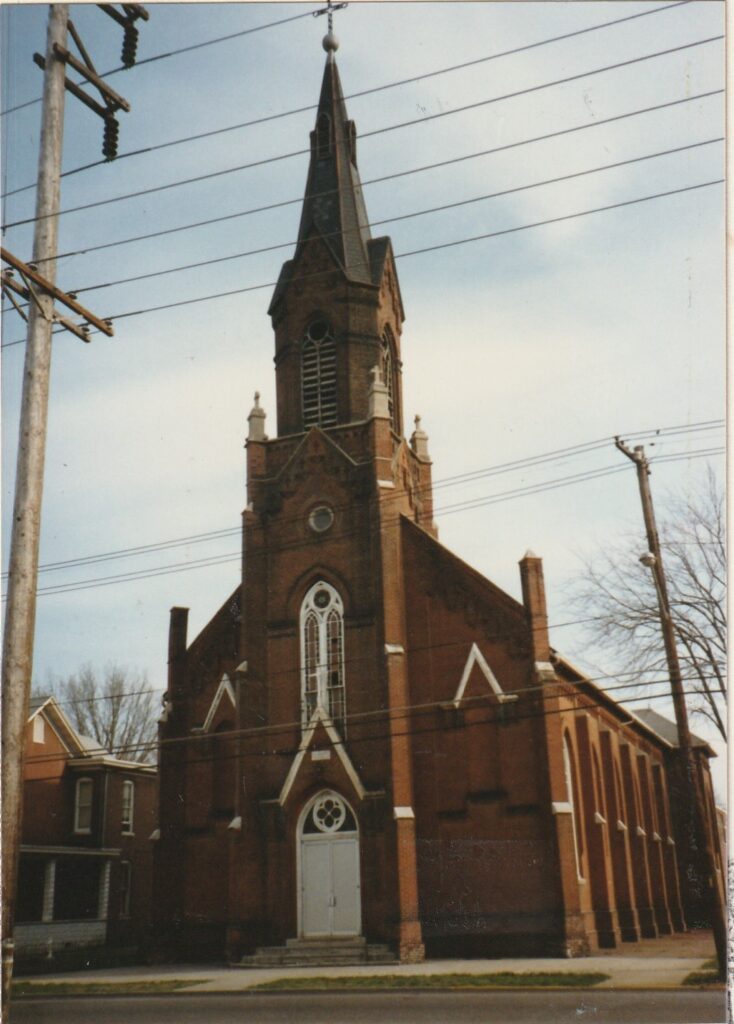
St. Joseph Church in Owensboro, a week before it was demolished in 1989. COURTESY OF GRADY EBELHAR
On March 7, 1880, the new 86-foot by 43-foot church was finally opened and blessed. Dedication would not come until 1883. The building cost $10,000. At that time, the parish had 65 families.
By the turn of the century, the building was reported to be in poor repair with the windows falling out. In 1912, the building was enlarged and the stained-glass windows in the church were imported from Munich.
When the church was finished it was said to be one of the prettiest sanctuaries in western Kentucky. In 1915 the Todd Estate on East Fifth Street adjoining St. Joseph Church was purchased by the congregation for school purposes and became St. Hubertus Academy, the parish school. In 1915 St. Joseph’s Parish School became a Catholic free school. St. Joseph’s was the only Catholic parish owning its own parochial school. It was a free school for all members of St. Joseph Parish who paid for their pews in church.
Some of the last names of the earlier parishioners were Graf, Arnold, Mischel, Weikel, Oberst, Lamb, Tennes, Crans, Strehl, Meis, Schaffer, Rose, Gillies, Dittman, Eger, Ebelhar, Kaelin, Kraft, Hart, Scherm, and Kamuf.
The people in the church and school had stopped speaking German in World War I. For a few years there were still a few confessions and rosaries said in German. Some of the early priests had worked all along to Americanize the parishioners.
The old German parish was combined in 1948 with St. Paul Parish. That left the new Saints Joseph and Paul Parish in the position of having two churches within a block of each other.
By the winter of 1977 with rising inflation driving heating and cooling bills up, St. Joseph Church could no longer justify staying open and the doors were locked.
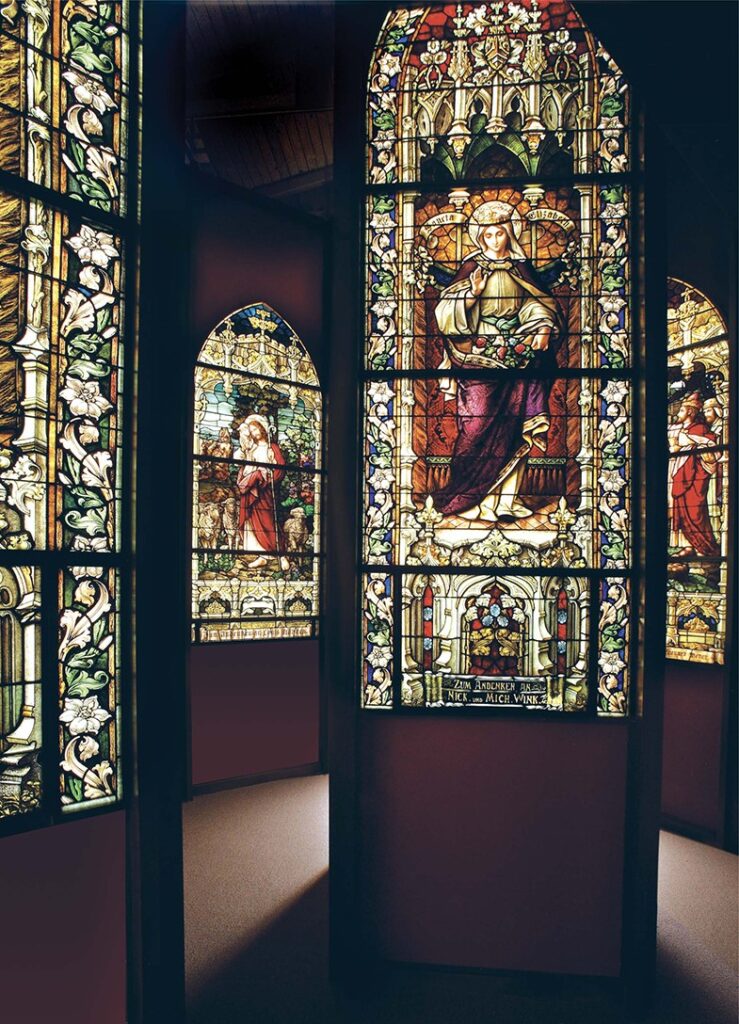
The stained-glass windows from the former St. Joseph Church in Owensboro, seen in their new home at Owensboro Museum of Fine Arts. COURTESY OF GRADY EBELHAR
The beautiful stained-glass windows imported from Germany were in danger of collapsing under their own weight. The church building was declared a Kentucky Landmark in 1978, but its usefulness to the diocese had passed. St. Joseph Catholic Church was one of the last remaining landmarks in Owensboro associated with the city’s early German settlers.
Brescia College considered establishing an Art Center there and Theatre Workshop of Owensboro studied the idea of turning the church into a theater, but the building was too deteriorated.
Bishop John J. McRaith said that it had become unsafe and that it would be demolished as soon as the historic windows could be removed. The windows, which were bought by individual families in St. Joseph Parish in 1912, were removed to the Owensboro Museum of Fine Art and were valued at more than $400,000. The 12 largest windows are 16 feet high by four feet wide with a Gothic Arch at the top. Most windows feature a realistic painting of a Catholic saint or other religious figures. The names of donors are painted on the lower panels of the windows.
In August 1989, the demolition of the 111-year-old church began. In September, the St. Joseph Parish was no longer a monument to the German American Catholic faith.
Grady Ebelhar is a descendant of one of the early parishioners.
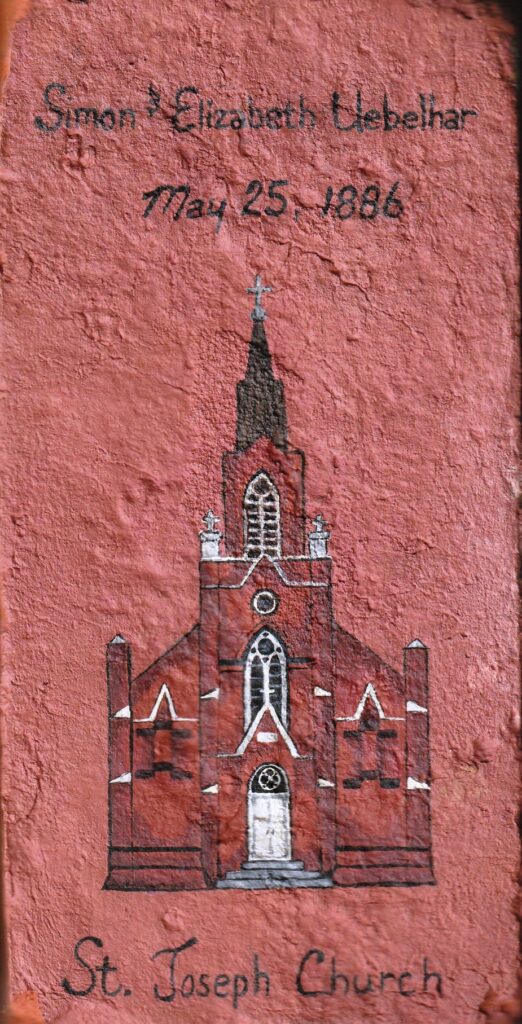
This brick, which had been located next to the cornerstone of the former St. Joseph Church in Owensboro, was saved by Grady Ebelhar, writer of this article. He had the church painted on the front of the brick with his great-grandparents’ names and the date they were married. COURTESY OF GRADY EBELHAR
Originally printed in the February 2024 issue of The Western Kentucky Catholic.

